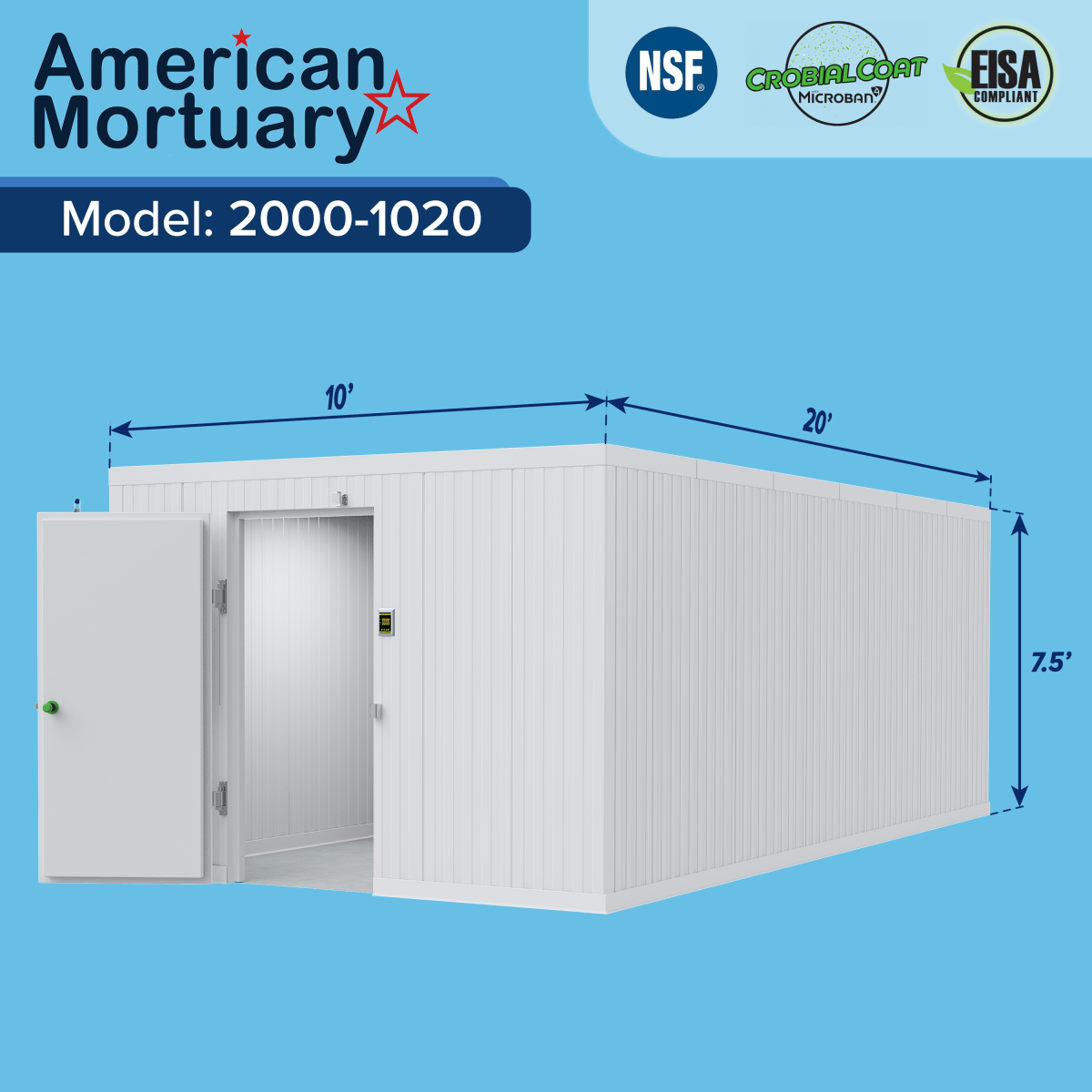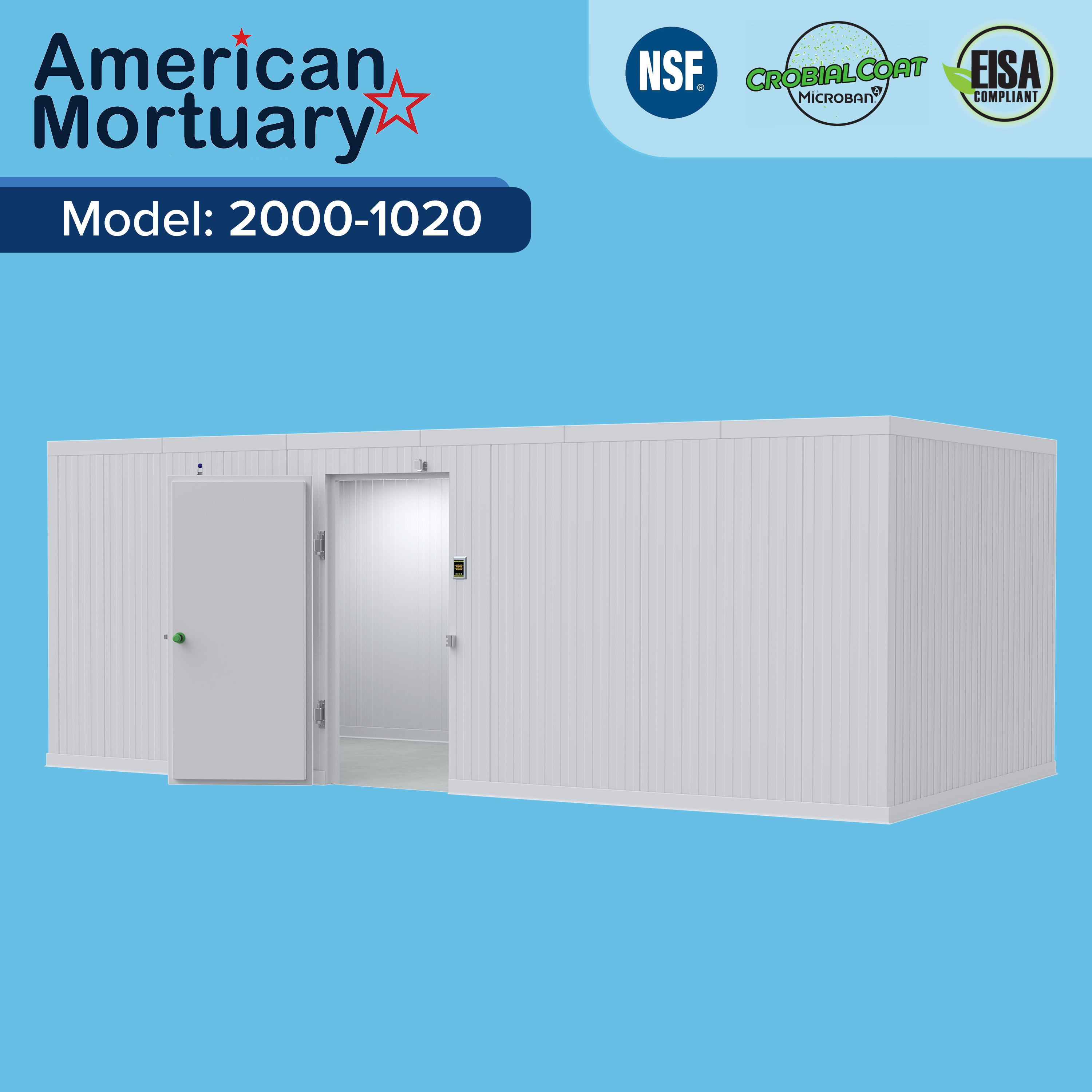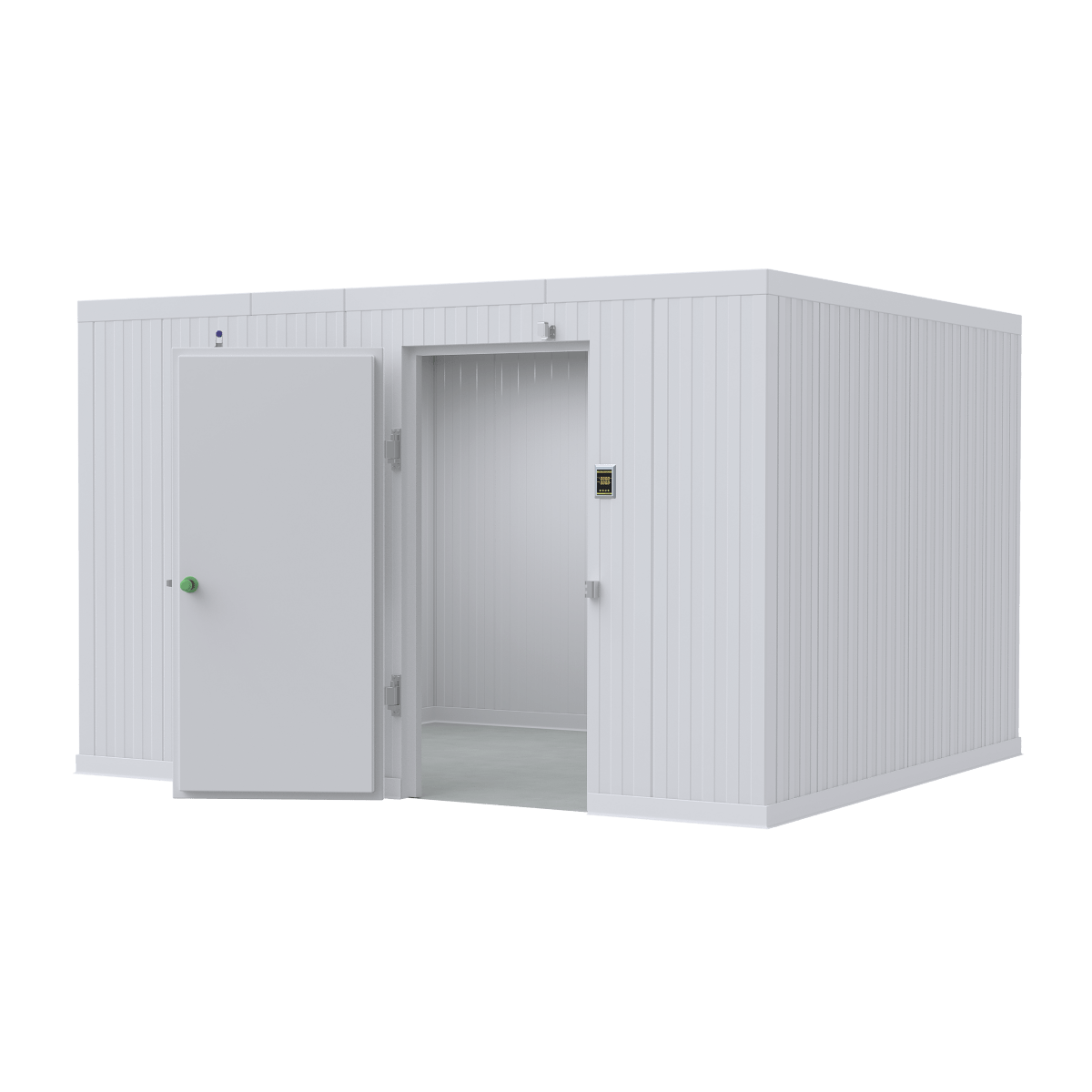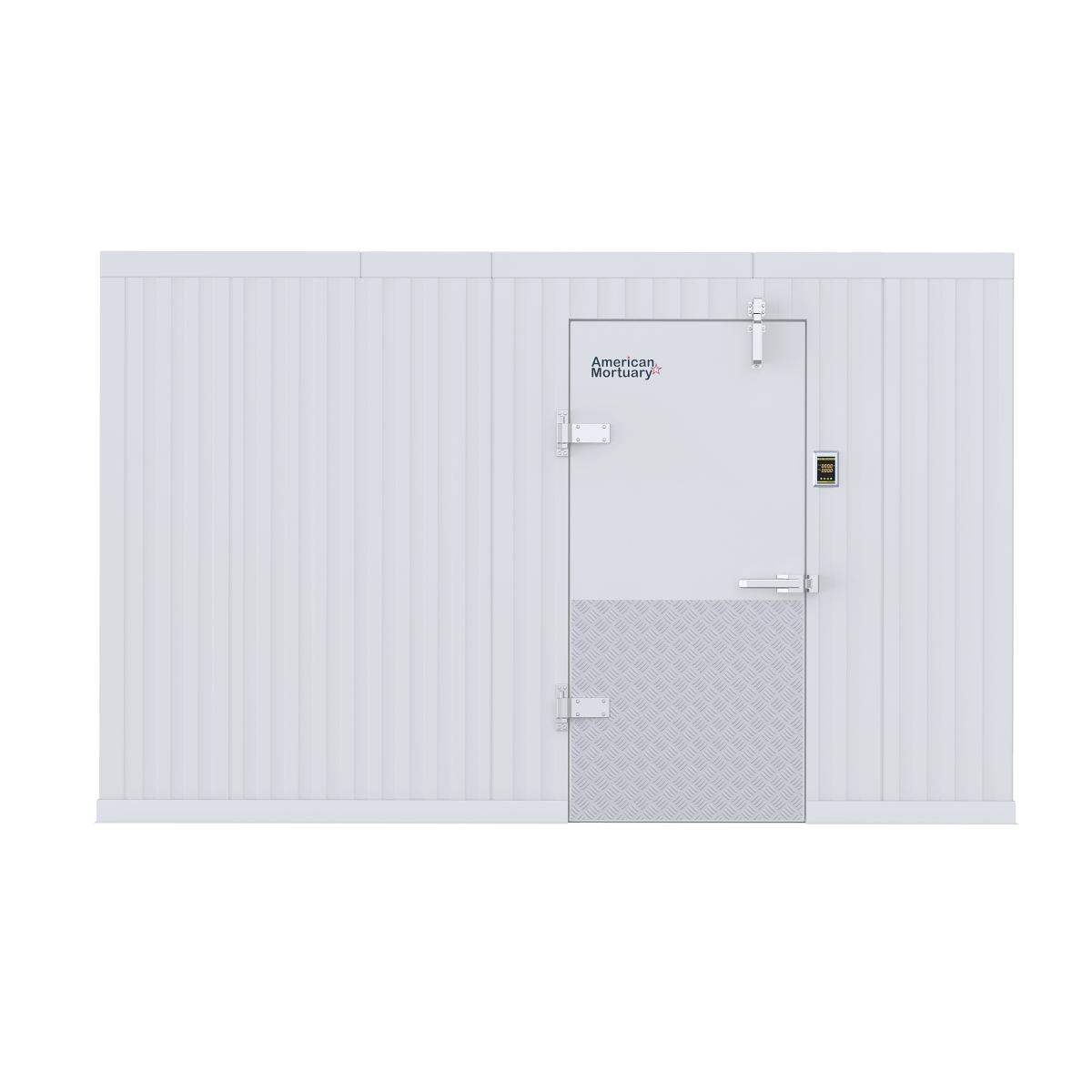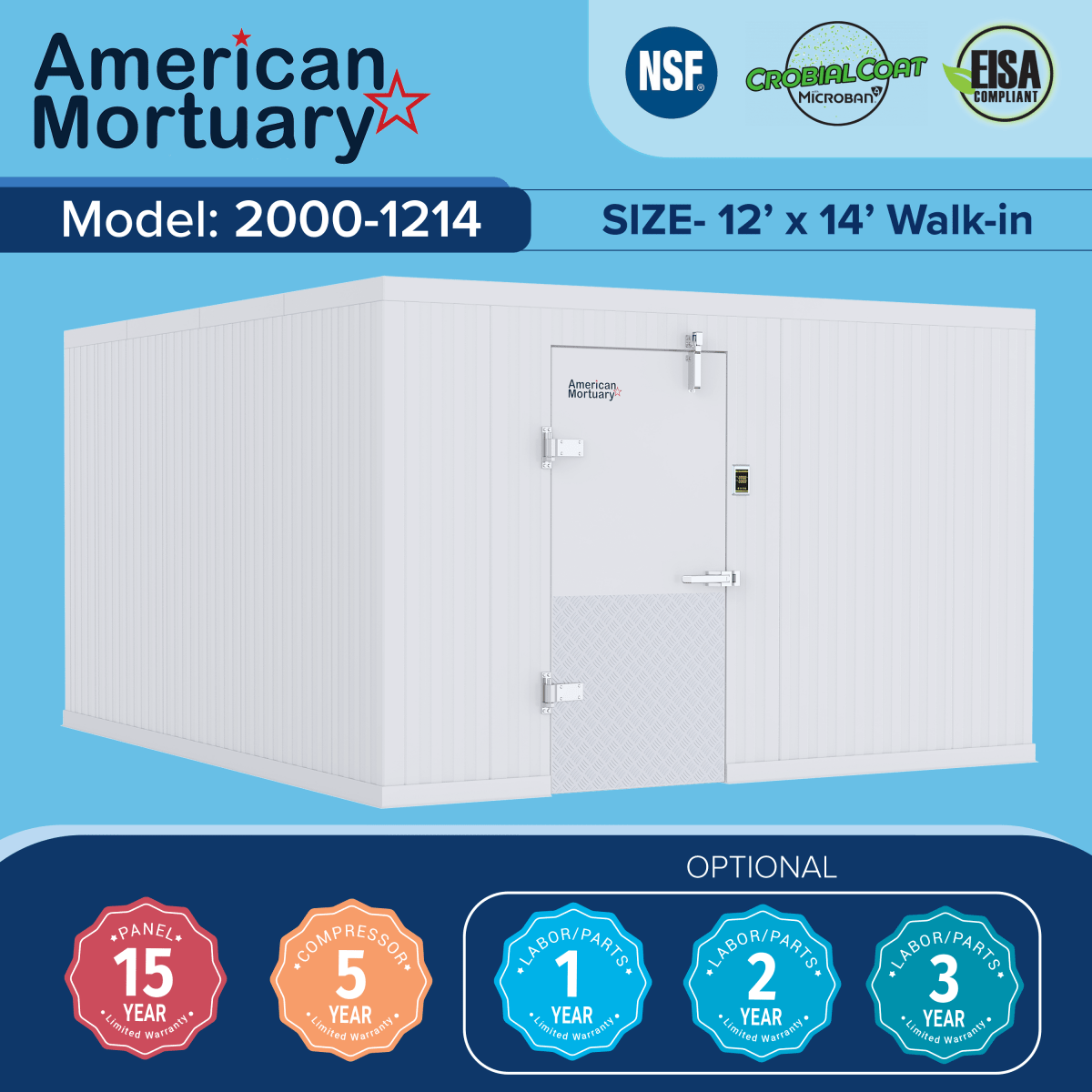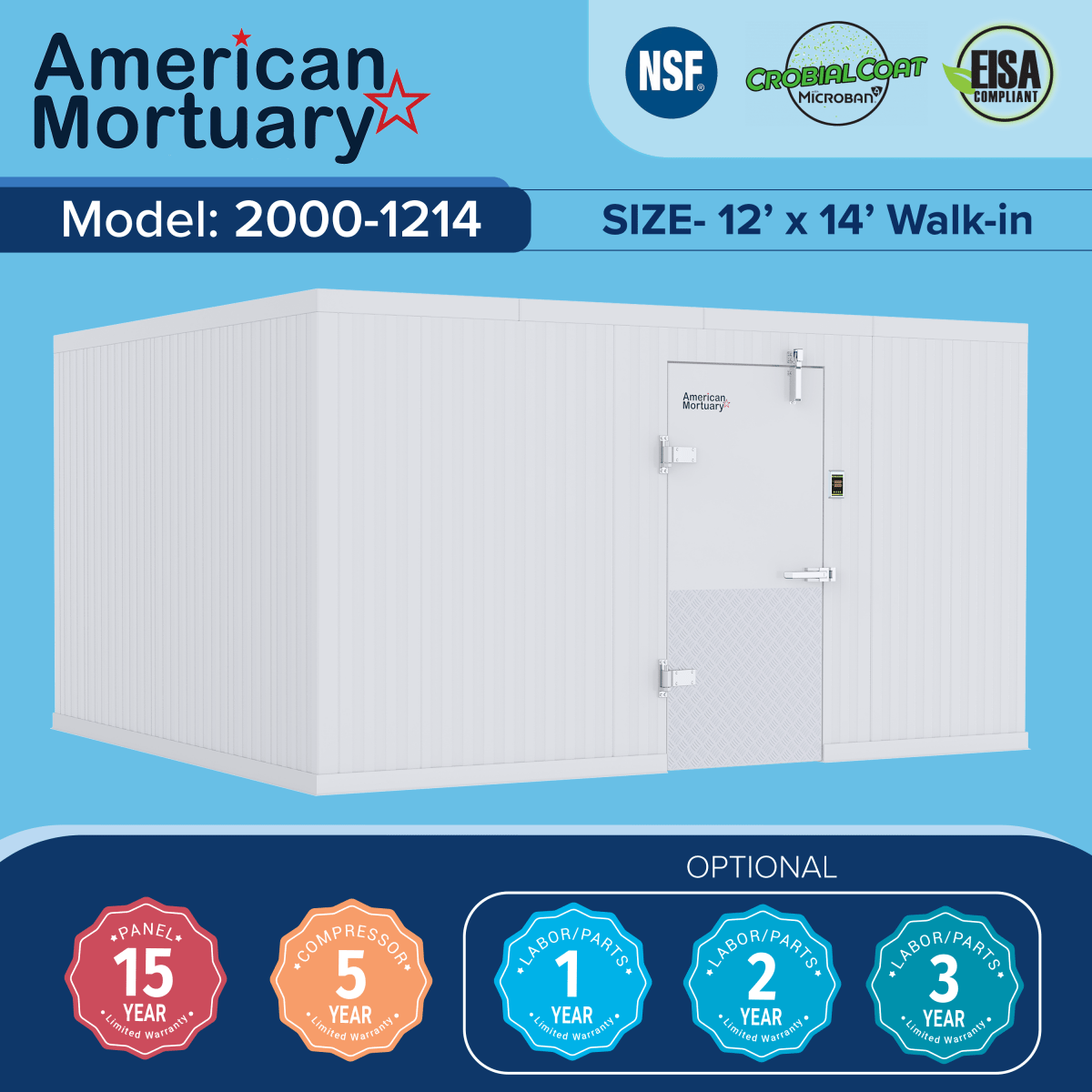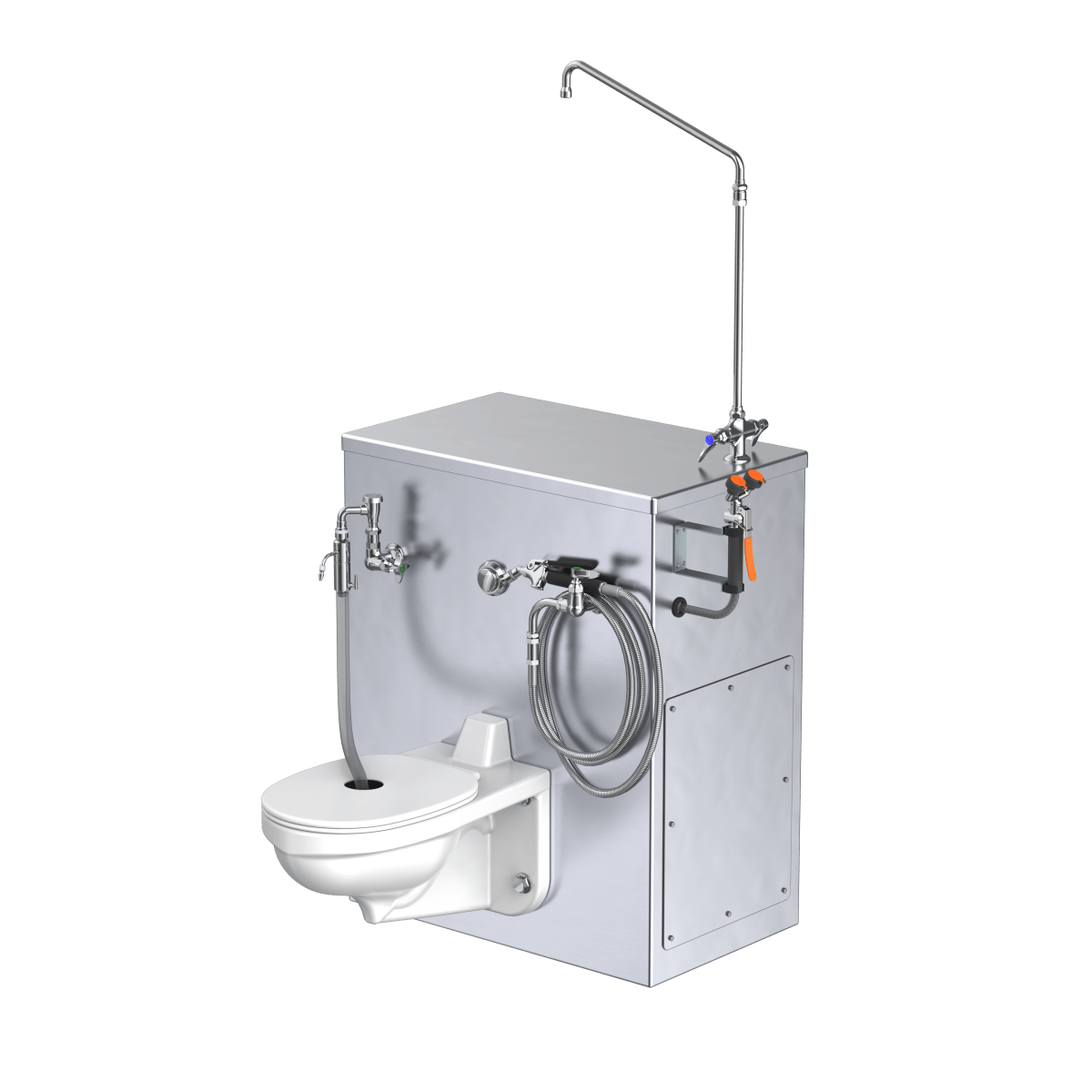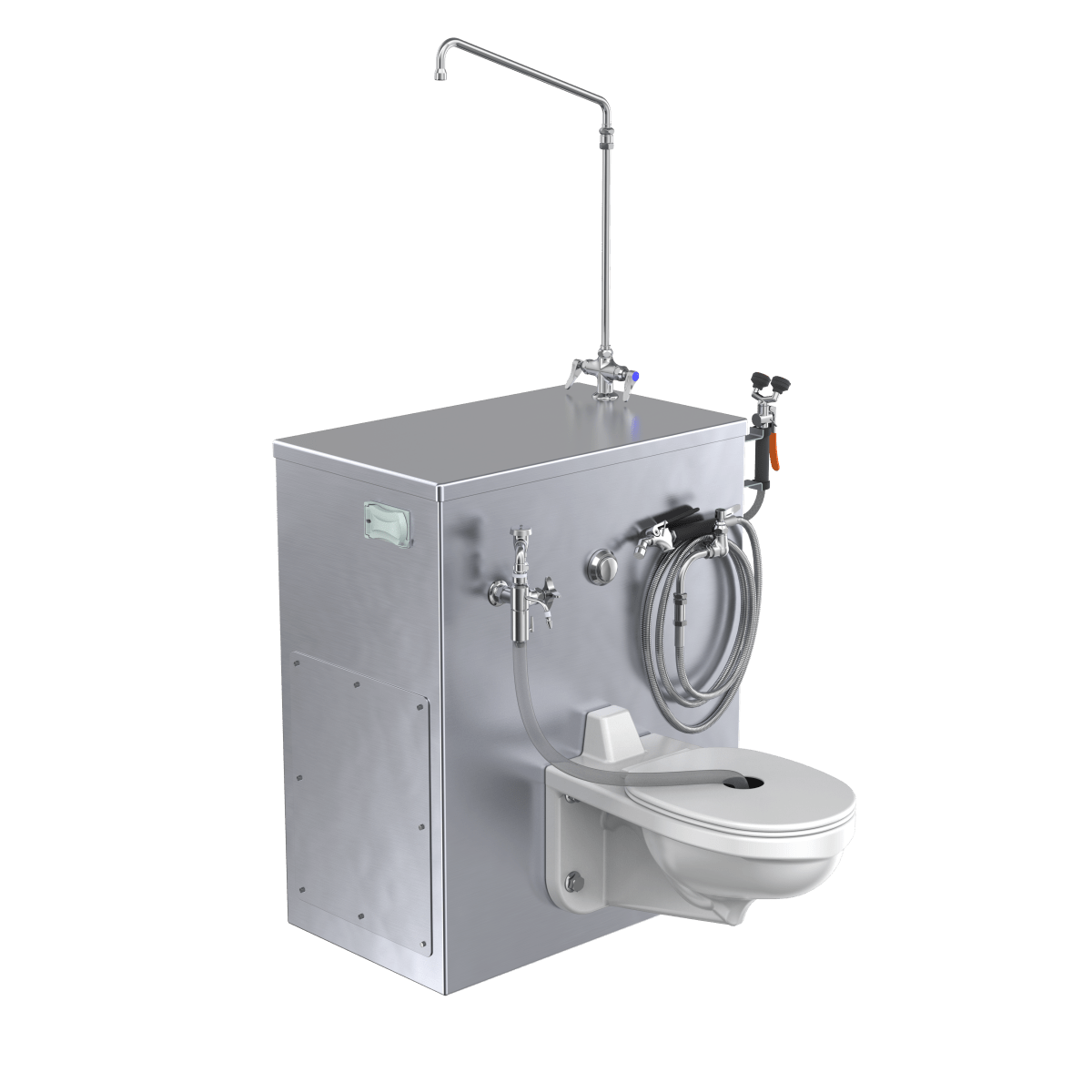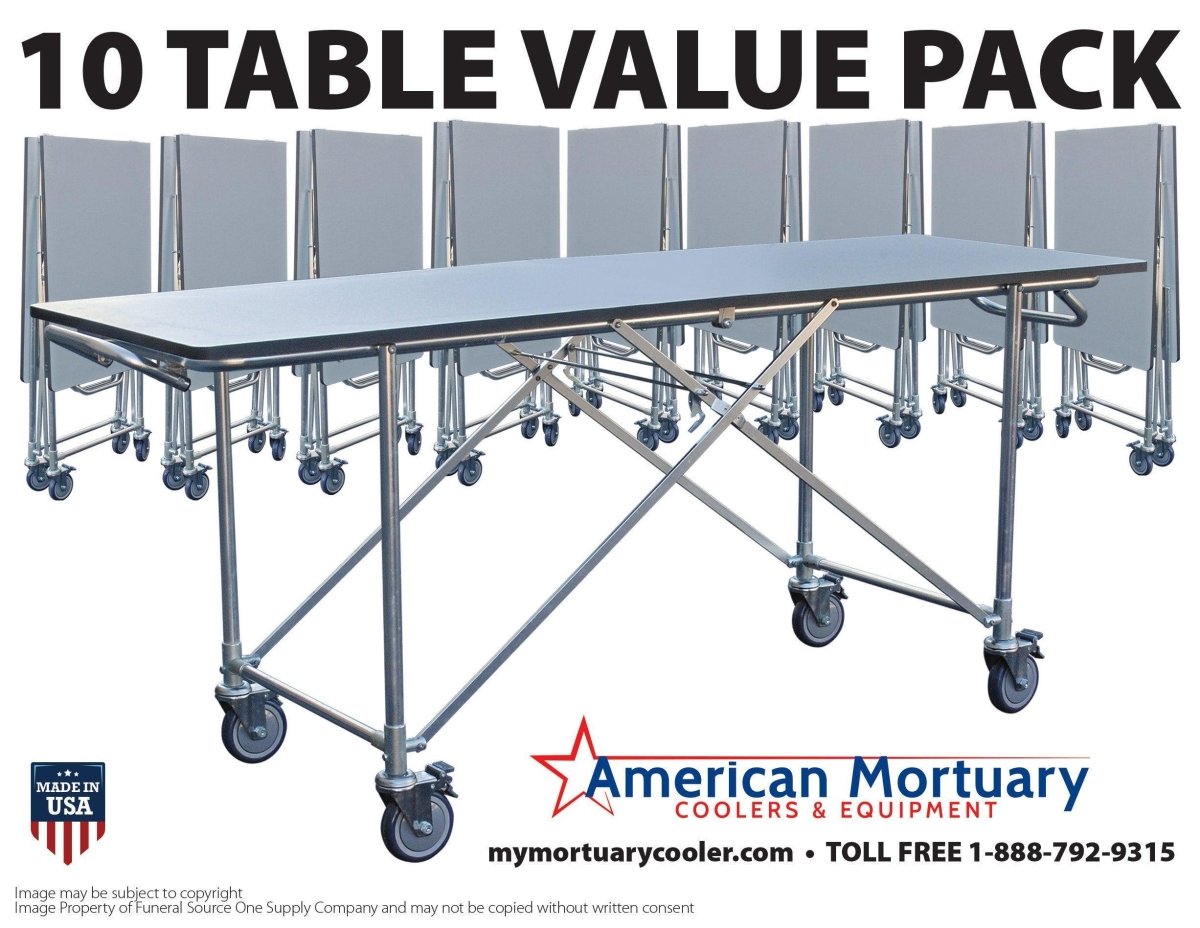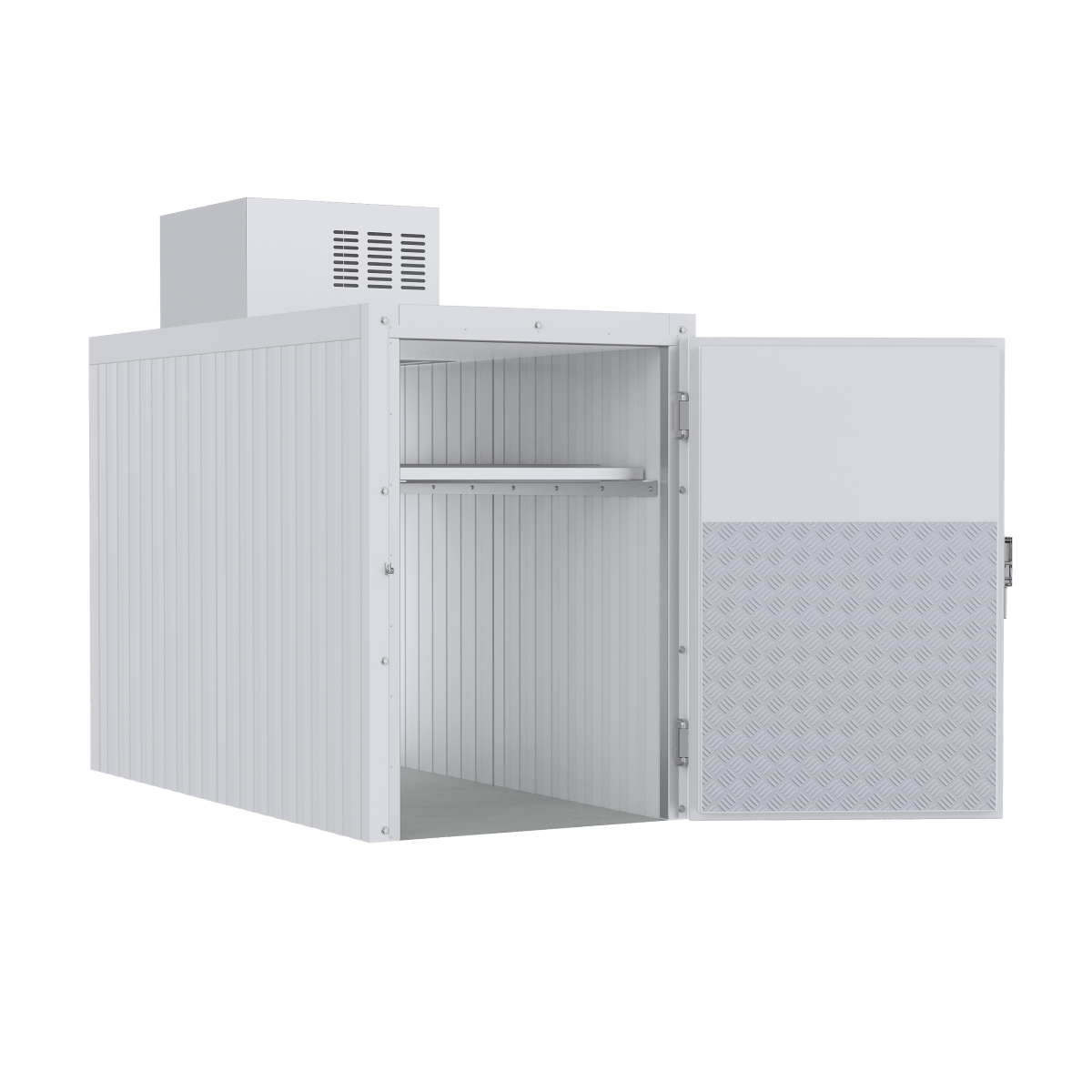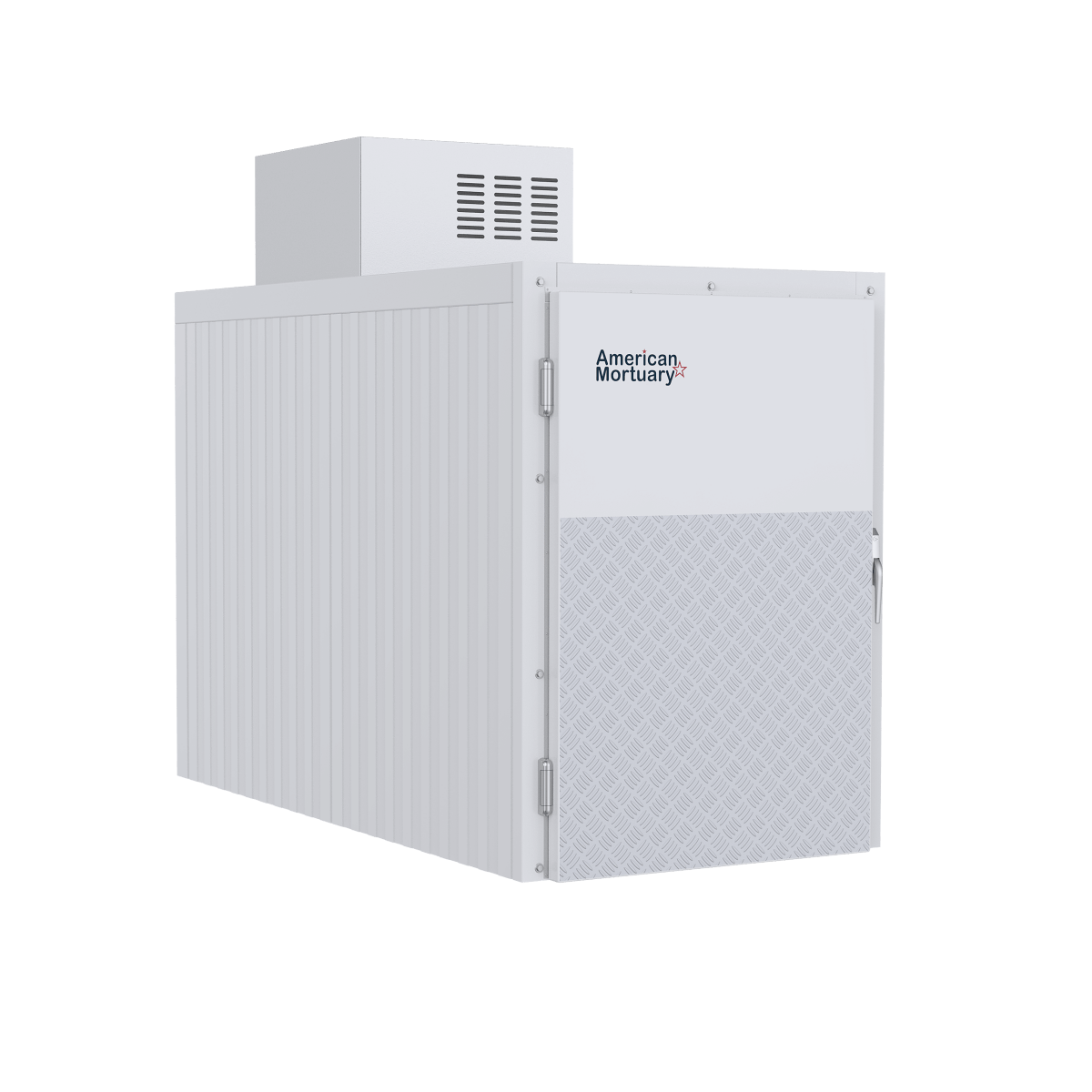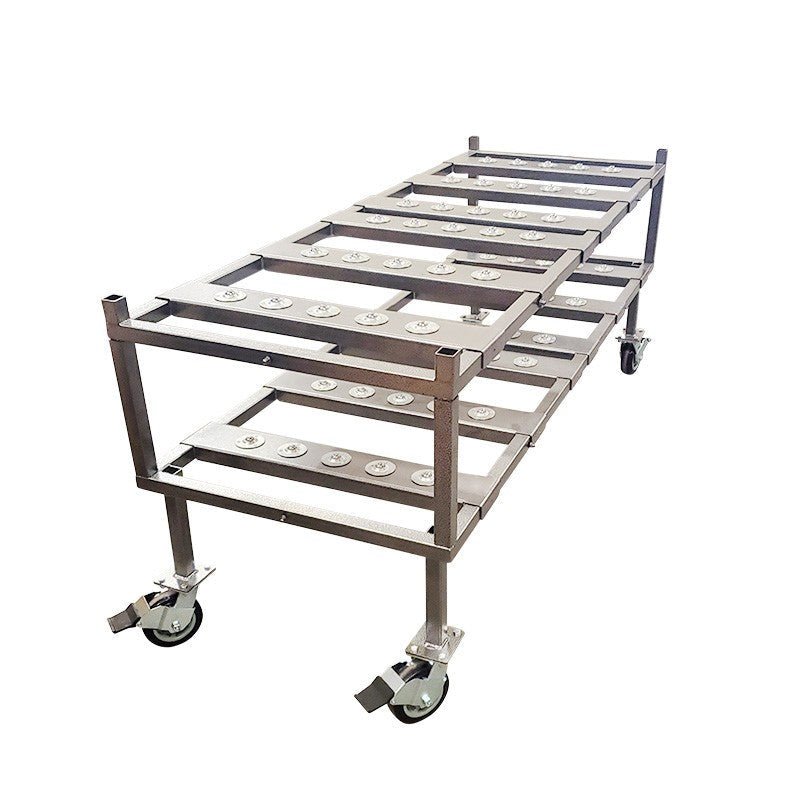The Evolution of Cooling Technology
Advanced cooling solutions are specialized thermal management systems designed to efficiently dissipate heat from electronic components, data centers, industrial equipment, and specialized facilities like mortuaries.
Types of Advanced Cooling Solutions at a Glance:
| Solution Type | Best For | Efficiency Level | Cost |
|---|---|---|---|
| Air Cooling | Standard equipment | Moderate | $ |
| Liquid Cooling | High-performance computing | High | $$ |
| Immersion Cooling | Data centers | Very High | $$$ |
| Two-Phase Cooling | Extreme heat loads | Exceptional | $$$$ |
As electronic devices become more powerful and compact, traditional cooling methods often fall short. The challenge of managing heat without compromising performance has driven significant innovation in thermal management technology.
"The unique capability of light to target and control localized heating spatially and at optical timescales for these devices open ups thermal design constraints that are so fundamental to chip design that it is hard to speculate what chip architects will do with it – but I trust that it will fundamentally change the types of problems we can solve with computers," notes one industry CEO.
For mortuary facilities, advanced cooling represents more than just technology—it's about reliability, precision, and maintaining dignity in a critical environment. Whether you're looking to upgrade existing systems or install new cooling infrastructure, understanding the landscape of advanced cooling technologies is essential for making informed decisions.
The evolution of cooling technology has moved from simple air ventilation to sophisticated solutions that can handle extreme heat loads while reducing energy consumption and operational costs. According to a 2025 report by the International Energy Agency, the adoption of advanced cooling technologies is expected to reduce global energy consumption by up to 15% by 2030.
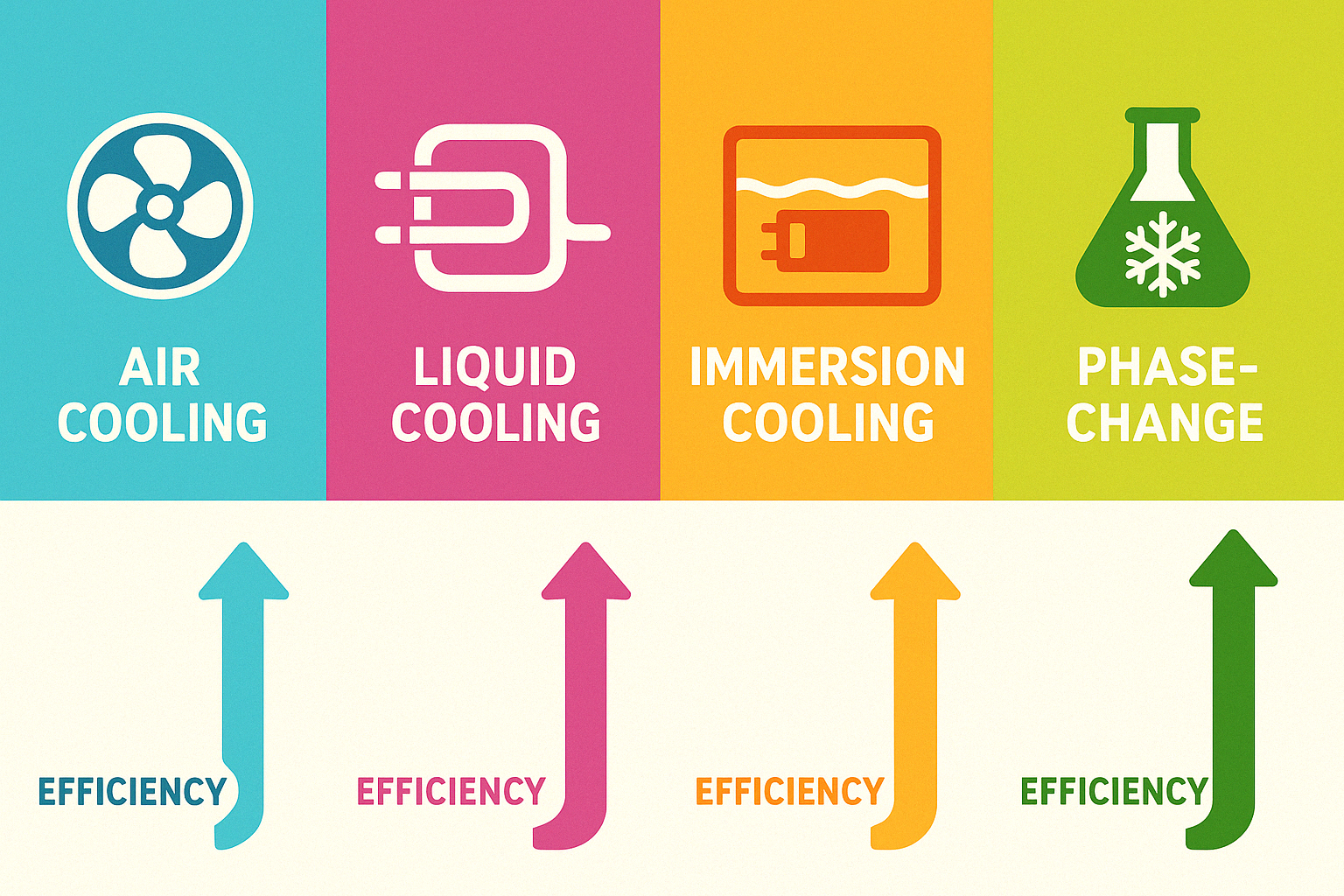
The Growing Need for Advanced Cooling Solutions
Remember when computers just needed a simple fan to stay cool? Those days are long gone. Today's technology is getting hotter—literally. As our devices become more powerful and compact, they're generating more heat than ever before, creating an urgent need for advanced cooling solutions across industries.
Power Density Increase
Think about the smartphone in your pocket. It now has more computing power than the systems that sent astronauts to the moon—all packed into something that fits in your hand. This incredible miniaturization comes with a heating challenge.
In data centers, the change has been even more dramatic. Racks that once drew 5-10 kW of power now gulp down 30-50 kW or more. That's like replacing a toaster with a small furnace and expecting your kitchen to stay the same temperature!
"If you're not thinking about thermal management from day one of your design process, you're already behind," as one thermal engineering expert puts it. "The days of adding a fan as an afterthought are long gone."
Compact Systems Challenge
The smaller devices get, the bigger our cooling headaches become. Modern technology's shrinking footprint creates a perfect storm for overheating. Your slim laptop, powerful smartphone, and even medical equipment all face the same fundamental problem: less space for heat to escape naturally.
For us at American Mortuary Coolers, this challenge hits close to home. We need to create cooling systems that maintain precise temperatures in limited spaces while remaining respectful and unobtrusive in mortuary settings. It's a delicate balance of technical performance and dignified design.
Thermal Management Importance
Good cooling isn't just about preventing a hot laptop from burning your legs. Effective thermal management has become crucial for several important reasons:
Preventing failures is perhaps the most obvious—overheating components simply break down. But good cooling also extends equipment lifespan significantly. A component running 10°C cooler might last twice as long.
Maintaining performance matters too. Many modern systems automatically slow down when they get too hot, meaning your expensive equipment isn't delivering what you paid for when it overheats.
For critical applications like medical equipment or, in our case, mortuary systems, reliability is non-negotiable. When a cooling system fails in a mortuary setting, the consequences extend beyond equipment damage to affecting dignity and care.
Finally, better cooling means lower energy bills. More efficient thermal management reduces the power needed to maintain proper temperatures, creating a win-win for both your budget and the environment.
High-Performance Demands
As our technological capabilities grow, so do our expectations. AI processing, real-time data analysis, and specialized environments all demand more from our cooling systems than ever before.
In mortuary settings, maintaining precise, consistent temperatures isn't just about equipment performance—it's an essential part of providing dignified care. When temperatures fluctuate, it affects everything from preservation to presentation, which is why we've committed ourselves to implementing the most reliable advanced cooling solutions in our systems.
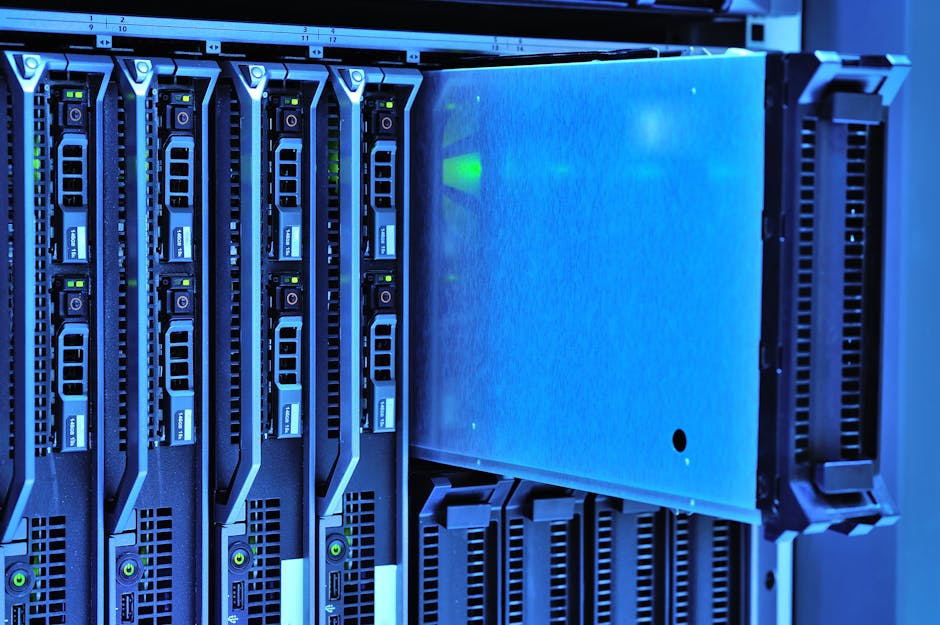
The heat is on—literally—for cooling technology to keep pace with our increasingly powerful and compact devices. Finding efficient ways to manage heat isn't just a technical challenge—it's becoming essential to continued progress across industries.
Types of Advanced Cooling Technologies
When it comes to keeping things cool, we've come a long way from simple fans. Today's advanced cooling solutions offer incredible efficiency and performance that would have seemed like science fiction just a few decades ago. Let's take a friendly tour through the cooling landscape that's changing everything from data centers to mortuary coolers.
Air Cooling: Evolution Beyond Basics
Don't write off air cooling just yet! While it might be the oldest method in the book, modern air cooling has gotten some serious upgrades. Today's systems are nothing like your grandmother's box fan.
Modern air cooling uses computer-designed airflow patterns that direct cool air exactly where it's needed. The heat sinks have evolved too, with intricate designs that maximize surface area for better heat transfer. Smart controls automatically adjust fan speeds based on temperature needs, saving up to 40% energy compared to older systems.
For many facilities with moderate cooling requirements, these improved air systems hit that sweet spot of performance and affordability. They're like the reliable family sedan of cooling technologies – not flashy, but dependable and cost-effective.
Liquid Cooling: The Power of Fluids
When things really heat up, liquid cooling steps in as one of the most effective advanced cooling solutions available. Water is about 25 times better at carrying heat than air, which makes liquid cooling a powerhouse for high-heat applications.
The concept is beautifully simple: a liquid coolant (usually water with some additives) circulates through a closed system, absorbing heat and then releasing it elsewhere through a heat exchanger. It's like giving your hot components their own private swimming pool!
Some systems bring the coolant directly to the chip (direct-to-chip cooling), while others use metal cold plates with internal channels. For data centers, you'll find liquid-cooled doors installed at the back of server racks or cooling units nestled between equipment. Companies like JetCool have shown impressive results with their systems, cutting power usage by 18% while handling the hottest devices on the market.
Immersion Cooling: Total Thermal Management
If liquid cooling is like giving your components a swimming pool, immersion cooling is like building your entire system underwater! This innovative approach among advanced cooling solutions completely submerges electronic components in special non-conductive fluids.
There are two main flavors of immersion cooling. Single-phase keeps the fluid in liquid form throughout the process, while two-phase systems use fluids that boil at low temperatures, creating an incredibly efficient cooling effect as the liquid changes to gas and back again.
The benefits are substantial – no more hotspots, no noisy fans, protection from dust and contaminants, smaller footprint requirements, and the ability to pack components more densely. For facilities where space and noise matter (like funeral homes using mortuary coolers), these advantages can be particularly valuable.
Phase Change Cooling: Using Latent Heat
Phase change cooling might sound complicated, but it's based on a principle we see every day – changing a substance from liquid to gas absorbs heat (think about how sweat cools your skin as it evaporates). These systems put this natural phenomenon to work in clever ways.
Heat pipes are sealed tubes containing a small amount of fluid that continuously evaporates and condenses. Vapor chambers work similarly but spread out across a larger area. Thermosiphons use gravity to return the cooled fluid, while refrigeration systems actively compress and expand refrigerants.
Recent breakthroughs have shown that utilizing water's latent heat in two-phase systems can achieve cooling that's up to 7 times more efficient than traditional methods. That's like upgrading from a garden hose to a fire truck! For more details on this breakthrough, check out the research published in SciTechDaily.
Comparison of Advanced Cooling Technologies
| Technology | Cooling Capacity | Energy Efficiency | Space Requirements | Maintenance Needs | Initial Cost |
|---|---|---|---|---|---|
| Advanced Air Cooling | Moderate | Moderate | Large | Low | $ |
| Liquid Cooling | High | High | Medium | Medium | $$ |
| Immersion Cooling | Very High | Very High | Small | Low | $$$ |
| Phase Change | Exceptional | Exceptional | Varies | Medium to High | $$$$ |
At American Mortuary Coolers, we carefully evaluate these technologies for their application in mortuary environments. Our priority is creating systems with reliable temperature control, quiet operation, and dignified appearance. Often, we'll combine elements from multiple cooling approaches to create the perfect solution for funeral homes across the nation.
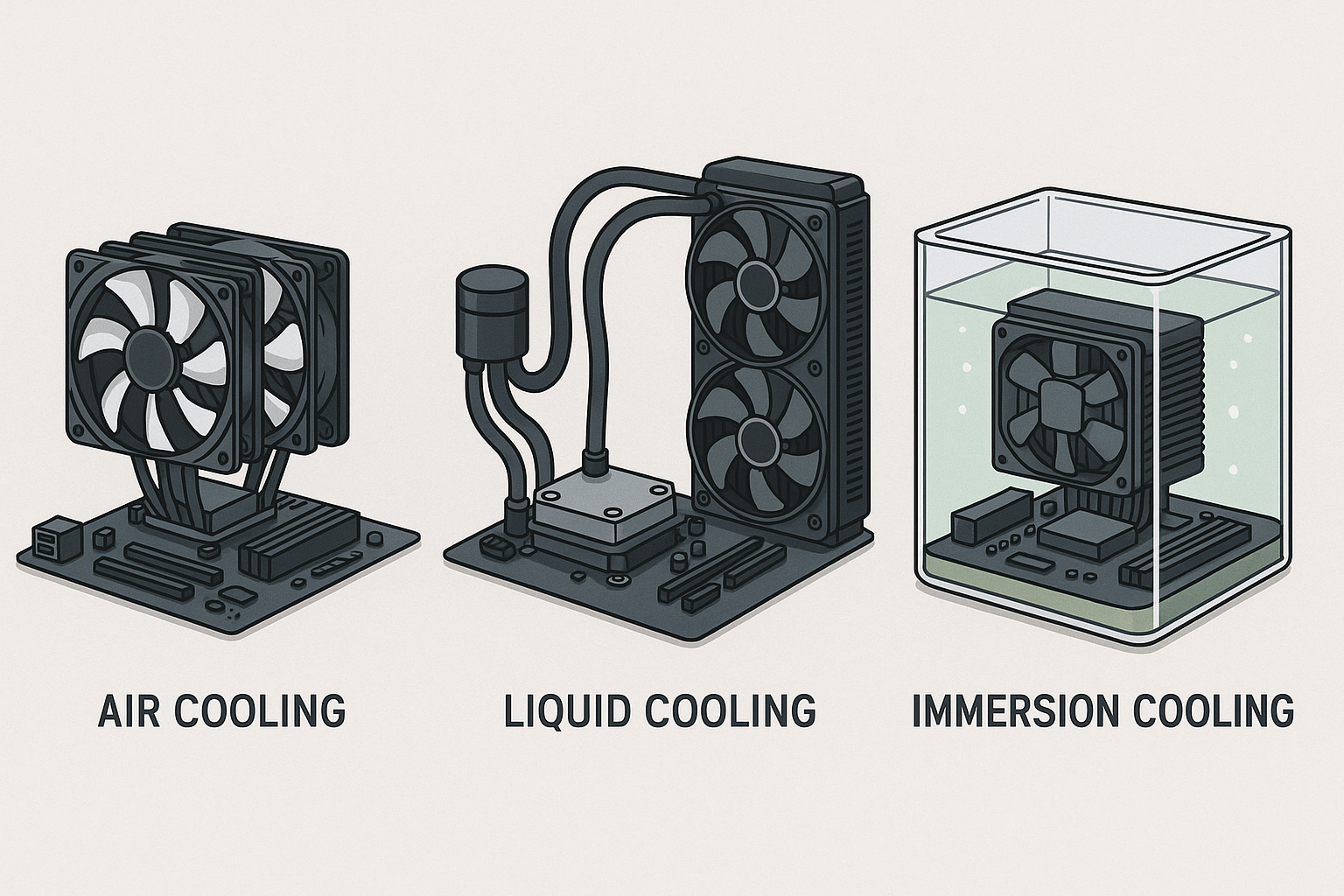
Liquid Cooling Systems: Enhancing Efficiency
Liquid cooling has truly revolutionized advanced cooling solutions, changing from what was once considered a specialty approach into a mainstream cooling powerhouse. If you've ever watched a high-performance gaming PC with those mesmerizing tubes of colored liquid, you've seen this technology in action – but its applications go far beyond gaming setups.
Energy Efficiency Breakthrough
When it comes to keeping things cool, liquid is simply more efficient than air – much like how jumping into a pool cools you down faster than standing in front of a fan. The numbers tell the story: data centers using liquid cooling systems have cut their energy usage by an impressive 30-40%.
Some facilities have even managed to ditch traditional air conditioning altogether! Modern coolant systems can operate effectively at temperatures above 60°C, eliminating the need for cooling towers that consume precious water resources. The industry measures efficiency using Power Usage Effectiveness (PUE), and liquid-cooled facilities are approaching the perfect score of 1.0.
Our research shows that switching to liquid cooling can save about 18% on power bills compared to traditional air cooling. For businesses watching their bottom line (and who isn't these days?), these savings add up quickly while also reducing environmental impact.
Reduced Operational Costs
The financial benefits of liquid cooling extend well beyond just the monthly energy bill. With fewer moving parts than traditional systems, there's less that can break down or wear out, meaning lower maintenance costs over time. Components running at cooler temperatures experience less thermal stress, which translates to longer equipment lifespans – something we all appreciate when investing in expensive hardware.
Liquid cooling also allows for higher density deployments, letting you fit more computing power in the same physical space. The cooling infrastructure itself takes up less room, freeing up valuable square footage. Perhaps most interestingly, some facilities are finding ways to capture and repurpose waste heat for facility heating or other applications – turning what was once a problem into a resource.
For specialized facilities like mortuaries, where cooling runs 24/7 and temperature precision is non-negotiable, these cost reductions can make a significant difference to the bottom line.
Direct-to-Chip Cooling: Precision Thermal Management
Direct-to-chip liquid cooling represents the pinnacle of advanced cooling solutions – think of it as the difference between using a garden hose to cool your entire yard versus directing a precise stream exactly where it's needed.
Modern systems use impressive microconvective technology that creates tiny fluid jets targeting processor hotspots with laser-like precision. As one manufacturer puts it, these solutions "Transform Thermal Management in Your High-Power Electronics" by "eliminating the need for thermal pastes or thermal interface materials, significantly reducing thermal resistance."
This precise approach delivers impressive capabilities, supporting devices from 150W all the way up to a whopping 2,000W. These systems are future-proof too, designed to handle the next three generations of processors. They're so efficient they can operate with high coolant temperatures without needing traditional refrigeration cycles.
Data Centers and High-Performance Computing
If you're wondering where liquid cooling really shines, look no further than modern data centers and high-performance computing environments. With the explosion of AI applications, cloud computing, and big data processing, traditional cooling methods simply can't keep up.
Liquid cooling provides crucial support for high-density server deployments and specialized hardware like multi-GPU servers and AI acceleration equipment. It ensures consistent performance without thermal throttling (where computers slow down when they get too hot), reduces the jet-engine-like noise of high-volume air cooling, and handles extreme computing loads during peak demand times.
As cooling experts Excool note after 15 years in the field, their advanced liquid cooling solutions ensure "low energy consumption while maintaining reliability and security" in data center applications.

How Liquid Cooling Exemplifies Advanced Cooling Solutions
Liquid cooling perfectly illustrates how far advanced cooling solutions have come by addressing the fundamental limitations of traditional approaches. Where air cooling struggles with today's increasing power densities, liquid cooling thrives.
The technology continues to evolve with exciting innovations like dielectric fluids that can safely contact electronics directly, modular designs that grow alongside cooling needs, and smart control systems that optimize cooling based on real-time demands. We're seeing better integration with building management systems for holistic energy management and specialized applications for unique environments like mortuaries.
At American Mortuary Coolers, we've incorporated liquid cooling principles into our designs where they make sense. The precision temperature control and reliability of these systems align perfectly with modern mortuary facilities' needs. Our cooling systems in Atlanta and Chicago particularly benefit from these advanced approaches.
As one cooling technology provider wisely advises, "Don't let thermal be an afterthought" – a philosophy we take to heart in our approach to mortuary cooling systems. By integrating the most appropriate advanced cooling solutions for each specific application, we ensure optimal performance, longevity, and energy efficiency for our customers across the country.
Immersion Cooling: Diving into the Future
Imagine your computer components taking a bath—not in water, of course, but in a special fluid that keeps them perfectly cool. That's essentially what immersion cooling is, and it's one of the most fascinating advanced cooling solutions changing how we manage heat in technology today.
How Immersion Cooling Works
The beauty of immersion cooling lies in its neat simplicity. Rather than fighting heat with fans and air, we simply submerge the heat-generating components directly in a special non-conductive liquid. Think of it as giving your electronics a cooling spa treatment!
In practice, the process works through direct contact. When electronic components are submerged, the cooling fluid touches every nook and cranny of the heat-generating surfaces. The heat transfers directly into the fluid, which then naturally circulates (or is pumped) to a heat exchanger where it cools down before returning to continue its work.
There are two main flavors of immersion cooling. Single-phase systems use a fluid that stays liquid throughout the entire process, transferring heat through simple circulation—perfect for moderate heat environments. Two-phase systems, on the other hand, use a fluid with a low boiling point that actually vaporizes when it contacts hot components. This phase change absorbs tremendous amounts of heat before the vapor condenses back to liquid at a condenser. It's incredibly efficient for handling extreme heat loads.
This isn't just theoretical technology—a Japanese telecommunication provider recently put single-phase immersion cooling to work in a small data center, proving this approach is ready for prime time.
Advantages Over Traditional Cooling Methods
Compared to conventional cooling approaches, immersion cooling feels almost like cheating. By eliminating air from the equation (which is actually a poor thermal conductor), immersion cooling achieves remarkable efficiency—typically 10-20% lower power consumption right off the bat.
One of the most beautiful aspects is how evenly it cools. No more worrying about hotspots, since every surface gets the same cooling bath. And say goodbye to fans! No fans means no noise, lower power use, and fewer things that can break down.
"By cooling below the dew point, electrical savings of 97-98% greater than conventional systems can be achieved," notes one cooling technology provider. Those numbers are hard to ignore.
The space savings are impressive too. Components can be packed much closer together without overheating, and you can eliminate raised floors, complex air ducts, and bulky air handlers. With fewer moving parts overall, the whole system becomes more reliable and simpler to maintain.
High Heat Density Management
Where immersion cooling truly shines is in handling extreme heat—the kind that would make traditional cooling methods wave a white flag. As our computing devices pack more power into smaller spaces, this capability becomes increasingly crucial.
Modern processors running at full tilt, servers crammed with multiple GPUs for AI applications, or specialized machine learning hardware—immersion cooling takes it all in stride. Some systems can handle up to 100 kW per rack, which is simply beyond what traditional cooling methods can dream of supporting.
This headroom gives system designers newfound freedom. Processors can run at their full potential without thermal throttling. Servers can be packed to unprecedented densities. And perhaps most importantly, there's room to grow as technology advances.
Sustainability Benefits
In our increasingly eco-conscious world, the sustainability benefits of immersion cooling are a major selling point. These systems can achieve a Power Usage Effectiveness (PUE) approaching 1.03—remarkably close to the perfect score of 1.0, and far better than traditional data centers that typically range from 1.5 to 2.0.
Water conservation is another big win. While traditional cooling towers can consume thousands of gallons of water, closed-loop immersion systems require minimal or no water consumption. The smaller facility footprint means less construction material and land use. And because components run cooler and are protected from dust and oxidation, they typically last longer before needing replacement.
Perhaps most intriguing is the potential for heat reuse. The waste heat from immersion cooling comes at higher temperatures than air cooling, making it much more practical to capture and repurpose for facility heating or other applications.

Immersion Cooling as an Advanced Cooling Solution
Immersion cooling perfectly embodies what advanced cooling solutions are all about—not just incremental improvements, but fundamental rethinking of how we approach thermal management.
Recent research shows that "utilizing water's latent heat in a two-phase cooling system can achieve up to 7x more efficient heat transfer than traditional single-phase methods." That's the kind of game-changing efficiency that puts immersion cooling in a class of its own. For a deeper dive into this breakthrough technology, check out the research published in SciTechDaily in 2025.
At American Mortuary Coolers, we're fascinated by how these principles might benefit specialized cooling environments like mortuaries. While we're not suggesting submerging entire mortuary systems in cooling fluid (that would be quite a sight!), we're exploring how the thermal efficiency principles can inform our cooling designs, particularly for our facilities in warmer regions like Dallas and Los Angeles.
As one industry expert noted, "Immersion cooling could mitigate thermal throttling in chips, potentially opening up new performance capabilities for computing systems." This potential to open up new performance levels makes immersion cooling one of the most exciting advanced cooling solutions to watch in the coming years.
The cooling revolution is here, and it's liquid. Whether you're running a massive data center or a specialized facility with critical cooling needs, the principles behind immersion cooling represent some of the most innovative thinking in thermal management today.
Advanced Cooling Solutions in Electronics and Data Centers
When it comes to keeping electronics and data centers from overheating, advanced cooling solutions aren't just nice to have—they're absolutely essential. As our devices get more powerful and smaller at the same time, managing heat has become one of the biggest challenges in the industry.
Enhancing Performance and Lifespan
Have you ever noticed your laptop getting uncomfortably hot during intensive tasks? That's thermal throttling in action—your device deliberately slowing down to prevent damage from overheating. This is where advanced cooling solutions make all the difference.
Good cooling doesn't just prevent damage; it actively improves performance. Modern processors can maintain their maximum speeds only when they're kept at the right temperature. For gamers and professionals using high-end systems, proper cooling even allows for overclocking—pushing components beyond their rated specifications for extra performance.
The benefits extend far beyond just speed. Every 10°C increase in operating temperature can slash component lifespan by up to half! By keeping things cool, advanced cooling solutions protect your investment and ensure systems run reliably for years.
"As chips get smaller and more powerful, keeping them cool becomes a serious bottleneck—until now," notes a recent research article highlighting breakthrough cooling technologies that are changing the game.
Managing Heat in Compact Systems
Remember when computers filled entire rooms? Now we carry more computing power in our pockets than what sent astronauts to the moon. This miniaturization creates unique cooling challenges that standard approaches simply can't handle.
Modern devices often stack components in 3D configurations, packing more power into less space. This creates layered heat problems that require innovative solutions. Some compact systems can't even use fans due to space constraints or noise concerns, making passive cooling essential.
The industry has responded with remarkable innovations: vapor chambers thinner than a credit card, cooling materials made from graphene and diamond that conduct heat incredibly efficiently, and even tiny cooling channels built directly into silicon chips. These advanced cooling solutions make today's slim yet powerful devices possible.
High-Density Electronics Cooling
Some electronic components generate heat at truly astounding rates. Modern graphics cards can pump out 300-400 watts of heat—enough to warm a small room—from a device smaller than a paperback book. When you're running multiple GPUs for AI applications or cryptocurrency mining, that heat multiplies quickly.
High-performance processors with dozens of cores present similar challenges, especially in servers with multiple CPU sockets. Power conversion components like inverters and power supplies also generate substantial heat while operating.
For these heat-intensive applications, traditional air cooling often falls short. Direct-to-chip liquid cooling has become essential, with solutions like JetCool's cooling modules that "handle the market's highest power density devices, achieving 18% power savings." These advanced cooling solutions don't just prevent overheating—they directly improve energy efficiency and performance.
Applications in Data Centers
Data centers represent the perfect storm of cooling challenges: thousands of heat-generating servers running 24/7 in confined spaces. In these facilities, cooling often accounts for 30-40% of total energy consumption. That's why data center operators are at the forefront of adopting advanced cooling solutions.
The challenges vary widely across different types of facilities. Hyperscale data centers might contain hundreds of thousands of servers, creating enormous cooling demands. Edge computing facilities are often squeezed into tight spaces without traditional infrastructure. AI and high-performance computing centers generate extreme heat density from specialized hardware.
Companies like Excool have developed solutions that scale from 250kW to 2MW to meet these diverse needs. Their systems ensure "low energy consumption while maintaining reliability and security"—absolutely critical factors when downtime can cost thousands of dollars per minute.

Specialized Applications: Mortuary Cooling
At American Mortuary Coolers, we've learned valuable lessons from data center and electronics cooling that we apply to our specialized field. While our application is different, the core principles remain remarkably similar.
Just as electronic components need precise temperature ranges to function properly, mortuary facilities require exact, consistent cooling for dignity and preservation. Reliability is non-negotiable in both environments—downtime simply isn't an option. Energy efficiency matters too, as cooling systems often run continuously for years.
Our mortuary cooling systems borrow innovations from the broader field of advanced cooling solutions while addressing the unique requirements of funeral homes. From our Northeast facilities dealing with humid summers to our Southwest locations battling desert heat, we implement cooling technologies custom to each region's specific challenges.
This crossover between high-tech cooling and specialized applications like mortuary facilities shows how advanced cooling solutions continue to evolve and find new uses across industries. Whether it's preserving dignity in a funeral home or keeping a data center running smoothly, the fundamental goal remains the same: reliable, efficient, and precise temperature control when it matters most.
Sustainability and Environmental Impact
When we talk about advanced cooling solutions, we're not just talking about keeping things cold. We're also talking about being kinder to our planet and your wallet. The cooling technology we use today is light-years ahead of what we had even a decade ago, and the environmental benefits are truly impressive.
Energy Efficiency: The Green Cooling Revolution
Remember when cooling systems were energy hogs? Those days are thankfully behind us. Modern cooling technologies have made remarkable strides in energy efficiency:
Direct liquid cooling systems can slash energy use by 30-50% compared to traditional air cooling. Immersion cooling takes this even further, achieving PUE ratings as low as 1.03 (that's incredibly efficient, with 1.0 being perfect). Some of our newest systems even capture waste heat and repurpose it for other uses instead of just venting it outside.
I'm particularly excited about smart control systems that adjust cooling based on real-time needs. Why run your cooling at full blast when you don't need to? It's like having a smart thermostat, but for industrial-grade cooling.
"By exploiting the latent heat of water, two-phase cooling can be achieved, resulting in a significant efficiency improvement in terms of heat dissipation," explains researcher Hongyuan Shi. It's amazing how using basic physics principles can lead to such dramatic energy savings.
Reducing Operational Costs Through Advanced Cooling
Let's talk dollars and cents, because the financial benefits of better cooling are substantial.
When you install an energy-efficient cooling system, you'll see lower utility bills month after month. But that's just the beginning. These systems typically have fewer moving parts, which means less maintenance and fewer repair calls. They often take up less space too, freeing up valuable real estate in your facility.
Equipment running at proper temperatures also lasts longer – sometimes much longer. For our mortuary clients from the Rocky Mountains to the Southeast, these savings add up to significant amounts over time.
For a mid-sized data center, advanced cooling solutions can save hundreds of thousands of dollars annually. Even for smaller facilities like mortuaries, the difference shows up clearly on your bottom line over time.
Environmental Impact Beyond Energy
Being green isn't just about using less electricity. Modern cooling systems make a difference in several other important ways:
Water Conservation is a huge benefit. Traditional cooling towers can guzzle millions of gallons of water every year. Our advanced systems either dramatically reduce water usage or eliminate it entirely. Some newer systems operate at temperatures above 60°C, completely eliminating the need for cooling tower water.
We're also making great progress with refrigerant management. Newer cooling systems use refrigerants with much lower Global Warming Potential, and some eliminate refrigerants completely. Better designs also mean fewer leaks, which is good news for the atmosphere.
I'm particularly proud of the space efficiency of modern cooling. Smaller cooling infrastructure means less building material used, and higher-density cooling means less need for new construction. It's about making better use of what we already have.
And let's not forget about noise reduction. If you've ever stood next to an old-school cooling system, you know how loud they can be. Liquid cooling systems eliminate or reduce fans, creating a much quieter environment. This is especially important in sensitive settings like mortuaries, where peace and dignity are paramount.
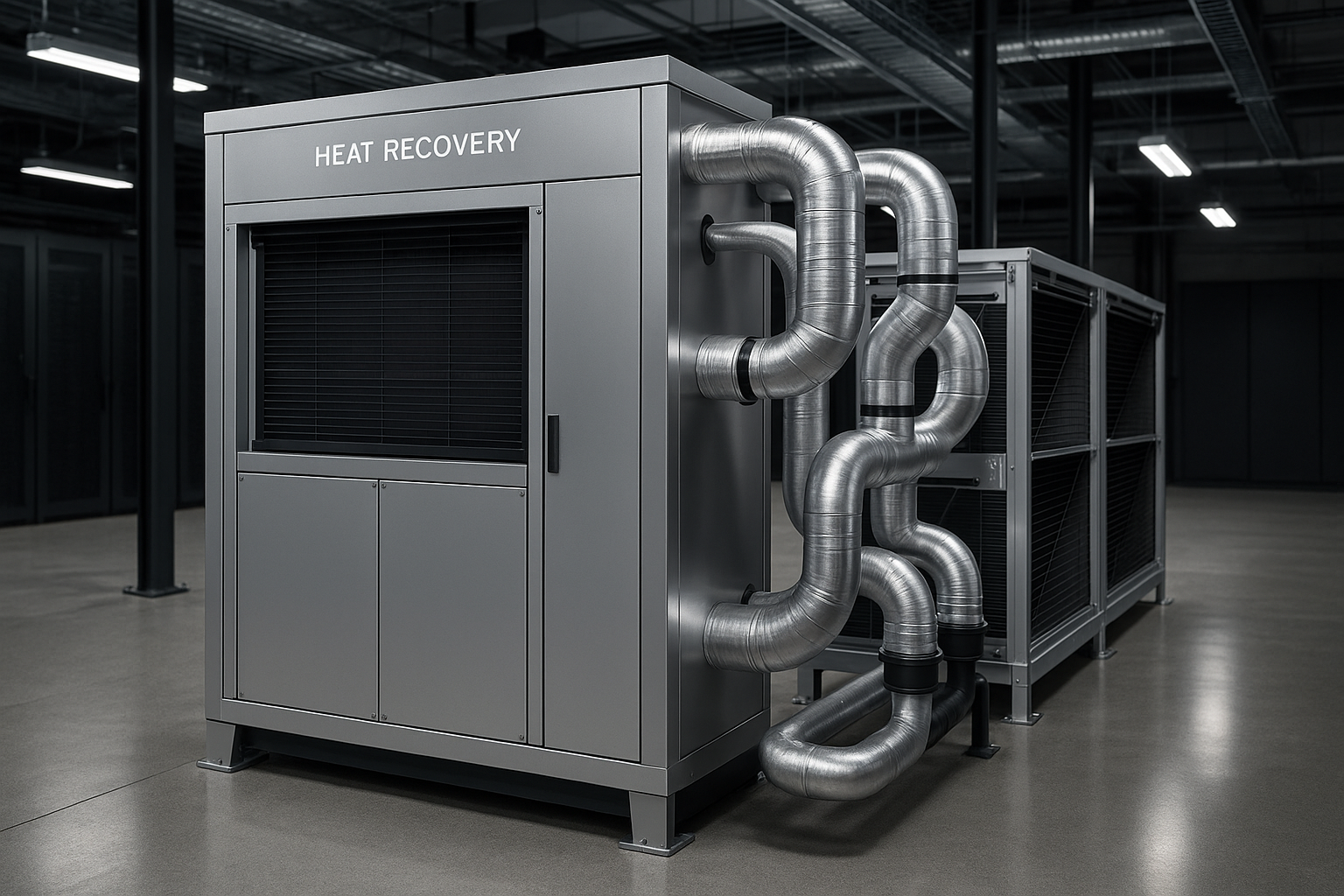
Contribution to Sustainability Goals
For many of our clients, installing advanced cooling solutions helps them meet broader sustainability targets:
Carbon reduction targets become much more achievable when your cooling systems run efficiently. If you're pursuing LEED certification for your building, energy-efficient cooling gives you valuable points toward that goal. Many organizations now include environmental metrics in their ESG reporting, and cooling efficiency improvements make for impressive statistics.
There's also the matter of staying ahead of regulations. As one industry report notes, "Changes of seismic proportions are coming to the cold storage industry, driven by new programs and regulations aimed at reducing energy consumption and curbing greenhouse gas emissions." Installing efficient cooling now isn't just good citizenship – it's good business planning.
For a comprehensive overview of how cooling technologies are evolving to meet sustainability goals, check out the 2025 Sustainable Cooling Handbook published by the Global Cooling Prize organization.

American Mortuary Coolers' Commitment to Sustainable Cooling
At American Mortuary Coolers, we believe in doing right by our planet while doing right by our clients. From New York to Los Angeles, we design systems that balance performance, reliability, and environmental responsibility.
We know that energy-efficient systems save our clients money year after year. We understand that today's funeral homes and families often prioritize environmental values. We stay ahead of regulations so you don't have to worry about compliance issues down the road. And perhaps most importantly, we've found that sustainable systems often simply work better.
By choosing the right technology for each specific application and region, we help funeral homes and mortuaries across the country reduce their environmental footprint while maintaining the highest standards of care and dignity.
The beauty of advanced cooling solutions is that you don't have to choose between being environmentally responsible and having exceptional performance. With the right technology, you can have both – something that benefits everyone, from your business to the planet we all share.
Frequently Asked Questions about Advanced Cooling Solutions
What are the main types of advanced cooling solutions?
When people ask me about cooling technology, I love explaining how far we've come from the old days of simple fans. Today's advanced cooling solutions come in several flavors, each with its own sweet spot for different applications.
The cooling world has evolved dramatically with improved air cooling systems that aren't just your grandfather's fans. These modern systems use carefully designed airflow patterns and high-efficiency fans that can reduce energy use by up to 40% compared to older designs. For many of our clients with moderate cooling needs, these provide an excellent balance of performance and affordability.
Liquid cooling has really made a splash in recent years (pardon the pun). These systems use water-based coolants that are much more efficient at transferring heat than air. Whether it's direct-to-chip cooling where the coolant practically kisses the hot components, or cold plate designs where components rest against metal plates with internal cooling channels, liquid cooling shines in high-heat environments.
I'm particularly fascinated by immersion cooling—it's like giving your electronics a bath! Components are completely submerged in special non-conductive fluids. In single-phase systems, the liquid stays liquid, while two-phase systems use fluids that boil at low temperatures, creating an incredibly efficient cooling effect. One client told me their immersion-cooled system runs so quietly they sometimes check twice to make sure it's working!
For specialized needs, phase change cooling technologies harness the physical principle that changing a substance from liquid to gas absorbs significant heat. Heat pipes, vapor chambers, and thermosiphons all use this principle in slightly different ways. We've seen breakthrough research showing these systems can achieve up to 7x more efficient heat transfer than traditional methods.
At American Mortuary Coolers, we carefully evaluate all these technologies when designing cooling systems for funeral homes. Often, the best solution combines elements from multiple approaches to create the perfect balance of reliability, efficiency, and quiet operation that mortuary environments require.
How do advanced cooling technologies improve energy efficiency?
The energy savings from advanced cooling solutions often surprise our clients. It's not just a small improvement—we're talking substantial reductions that make both environmental and financial sense.
The physics tells the story: liquids simply transfer heat more effectively than air. By implementing liquid cooling, you're immediately improving the fundamental efficiency of heat transfer. This means less energy needed to move the same amount of heat. Many of our systems reduce energy consumption by 30-50% compared to traditional air cooling.
Fan reduction is another big win. Those spinning blades in traditional cooling systems can gulp down 10-15% of total power consumption. Many advanced systems dramatically reduce or even eliminate fans entirely. One mortuary director in our Chicago location mentioned how pleased he was with both the energy savings and the blessed quiet after upgrading.
Smart controls make a huge difference too. Modern cooling systems can think for themselves, adjusting in real-time as conditions change. Rather than running full-blast all the time, they provide precisely the cooling needed at any moment. It's like the difference between a light switch and a dimmer—why use full power when you don't need it?
The waste heat recovery capabilities of some advanced cooling solutions are particularly clever. Instead of just expelling heat outside, these systems capture it for reuse in heating buildings or water. One of our clients in our Northeast region uses this approach to reduce their winter heating bills substantially.
For mortuary facilities that need cooling 24/7/365, these efficiency improvements translate directly to the bottom line. When a system runs continuously, even small efficiency gains compound into significant savings over time. Many of our clients see payback periods of just 2-3 years on their investment in advanced cooling technology.
What industries benefit most from advanced cooling solutions?
While virtually any industry can benefit from better cooling, I've seen certain sectors accept advanced cooling solutions with particular enthusiasm.
Data centers and cloud computing facilities are perhaps the most obvious beneficiaries. When you pack thousands of servers into a building, traditional cooling methods simply can't keep up. One data center manager told me their power bill dropped by nearly a third after implementing liquid cooling—while simultaneously increasing their computing capacity.
The artificial intelligence boom has created extraordinary cooling challenges. AI hardware generates intense heat during training and inference operations. Without advanced cooling, these systems would literally cook themselves. The companies pushing the boundaries of AI are also pioneering new cooling approaches out of sheer necessity.
Telecommunications has evolved rapidly with 5G deployment. These systems often need to operate in compact, distributed locations where traditional cooling isn't practical. The efficiency and reliability of advanced cooling solutions make them ideal for these applications.
In healthcare settings, precise temperature control can be literally life-saving. From MRI machines to laboratory equipment, advanced cooling ensures these critical systems function reliably while reducing operational costs.
Of course, our focus at American Mortuary Coolers is on the funeral industry, where dignified, reliable cooling is essential. A mortuary cooler can't fail—period. The stakes are too high. That's why we've brought the most appropriate advanced cooling technologies to this specialized field. From our Pittsburgh facilities to our Pacific Region operations, we've seen how the right cooling approach improves reliability while reducing costs.
Industrial manufacturing, automotive, aerospace, and energy generation sectors have all found compelling reasons to adopt advanced cooling. In each case, the benefits extend beyond simple cost savings to enabling new capabilities, improving reliability, and reducing environmental impact.
What considerations are most important when selecting an advanced cooling solution?
Choosing the right advanced cooling solution isn't about grabbing the newest, shiniest technology—it's about finding the perfect match for your specific needs. I always tell our clients to think about cooling as a custom suit rather than an off-the-rack purchase.
First and foremost, you need to honestly assess your cooling capacity requirements. This means understanding both your average heat load and your peak demands. I've seen too many facilities undersize their cooling and regret it later. Always build in some headroom for reliability and future growth.
Space constraints often dictate which cooling options are viable, especially in retrofit situations. I remember visiting a historic funeral home in our Midwest region that had very limited space for mechanical systems. We designed a compact liquid cooling solution that fit within their constraints while still providing the performance they needed.
The balance between initial investment and long-term operational costs deserves careful consideration. More efficient systems typically cost more upfront but save money over their lifetime. One mortuary director shared that his advanced system cost 40% more initially but paid for that premium in just over two years through energy savings.
Noise considerations are particularly important in environments like mortuaries where quiet, dignified operation is essential. Many advanced cooling solutions operate with significantly less noise than traditional systems—a benefit that goes beyond mere preference to supporting the solemn atmosphere appropriate for funeral services.
Local climate conditions can dramatically affect which cooling approach makes the most sense. A solution that works perfectly in our Chicago location might be less ideal for our Dallas facilities due to the difference in average temperatures and humidity levels.
Regulatory compliance cannot be overlooked. Refrigerant regulations continue to evolve, and energy efficiency standards are becoming more stringent. Choosing a forward-looking solution helps avoid costly retrofits down the road.
At American Mortuary Coolers, we take a consultative approach across all our locations—from Chicago to Dallas—matching the cooling solution to the precise requirements of each mortuary environment rather than pushing a one-size-fits-all approach.
How are advanced cooling solutions addressing environmental concerns?
The environmental benefits of advanced cooling solutions go far beyond just saving energy, though that's certainly a big part of the story.
Energy efficiency is the most obvious environmental advantage. When cooling systems use less electricity, they directly reduce carbon emissions from power generation. For perspective, in a typical data center, cooling accounts for 30-40% of total energy use. By implementing more efficient cooling, these facilities can dramatically shrink their carbon footprint.
Many newer cooling systems use refrigerants with significantly lower Global Warming Potential (GWP) or eliminate refrigerants entirely. This matters because refrigerant leaks have a disproportionate climate impact—some older refrigerants have thousands of times the warming potential of CO2. One facility manager told me switching to a low-GWP system was like taking dozens of cars off the road in terms of climate benefit.
Water conservation is another environmental win. Traditional cooling towers can consume millions of gallons of water annually—a resource growing increasingly precious. Advanced air-cooled and closed-loop systems dramatically reduce or eliminate this water consumption. In water-stressed regions where some of our facilities operate, this benefit is particularly valuable.
I'm especially impressed by the waste heat recovery capabilities in some systems. Rather than simply expelling heat (essentially wasting energy), these systems capture and repurpose it for building heating or other processes. It's like getting two uses from the same energy—a win-win for both operational costs and environmental impact.
At American Mortuary Coolers, environmental responsibility guides our approach from our Midwest operations to our Southeast facilities. We design our cooling systems to minimize environmental impact while maintaining the highest standards of performance that mortuary settings demand. Many of our clients appreciate that their operational improvements also align with their values regarding environmental stewardship.
The beautiful thing about these environmental benefits is that they typically align perfectly with financial interests. Lower energy use means lower utility bills. Reduced water consumption means lower water bills. Extended equipment life means fewer replacements and less manufacturing impact. It's rare to find solutions that so clearly benefit both the bottom line and the planet.
Conclusion
The world of advanced cooling solutions is changing faster than ever. It's not just about keeping things cool anymore – it's about doing it smarter, more efficiently, and with less impact on our planet. From souped-up air cooling systems to cutting-edge immersion technology that submerges entire components in cooling fluid, we've come a long way from the simple fans of yesterday.
In our work at American Mortuary Coolers, these advancements mean everything. After all, reliable temperature control isn't just a nice-to-have in mortuary settings – it's absolutely essential. We've made it our mission to bring these cooling innovations to funeral homes across the country, adapting them specifically for the unique and sensitive environment of mortuary care.
We don't believe in one-size-fits-all solutions. A mortuary in humid Florida has completely different cooling needs than one in the dry heat of Arizona. That's why we tailor our advanced cooling solutions to match the specific challenges of each location. The cooling system we install in our Northeast Region facilities looks quite different from what works best in our Southwest operations.
What excites us most about these cooling technologies isn't just their technical performance – it's how they're helping funeral homes operate more sustainably. Modern cooling systems use less energy, create less noise, and often last longer than their predecessors. For a facility that needs to run cooling 24/7, these efficiency gains translate into significant cost savings over time, not to mention a smaller environmental footprint.
The future of cooling technology is heading toward even greater efficiency and sustainability. As we continue serving funeral homes from coast to coast, we remain committed to staying at the forefront of these innovations. Every new advancement in cooling technology is an opportunity for us to deliver even better solutions to the mortuary professionals who count on us.
For those working in the funeral industry who want to learn more about how these advanced cooling solutions might benefit your facility, we're here to help. We understand the unique requirements of mortuary environments and can guide you toward the cooling approach that makes the most sense for your specific situation.
As we look ahead to the rest of 2025 and beyond, we're excited about the new cooling technologies on the horizon. The Department of Energy's 2025 Cooling Innovation Roadmap suggests that we'll see even more breakthroughs in energy-efficient cooling over the next few years, and we're committed to bringing those innovations to the mortuary industry as soon as they're ready for prime time.
The path to better cooling continues to unfold, and at American Mortuary Coolers, we're proud to be leading the way in bringing these technologies to the mortuary industry. From our custom-designed systems to our nationwide delivery and support, we're committed to ensuring that funeral homes across America have access to the most reliable, efficient, and appropriate cooling solutions for their needs.


